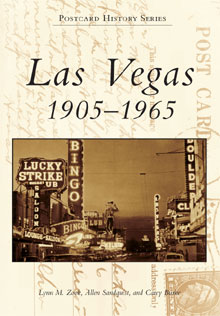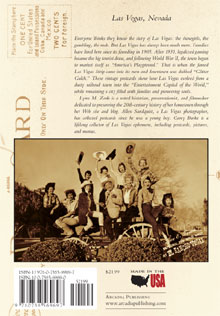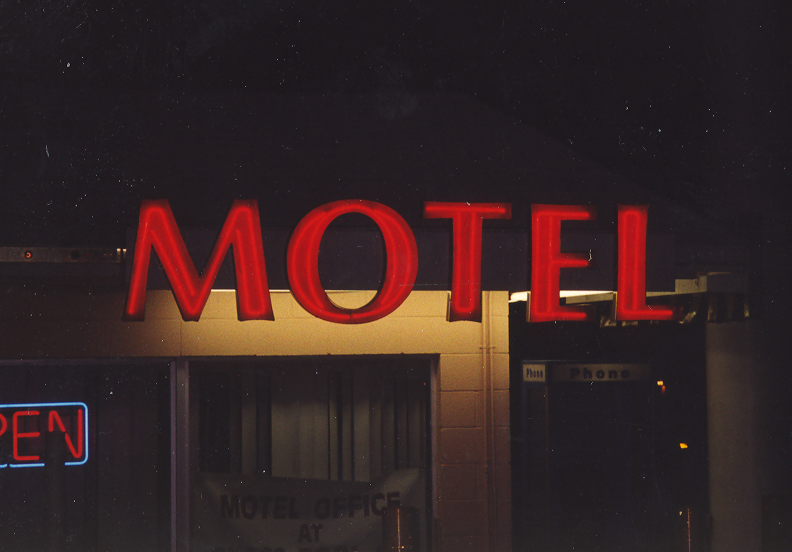Our good friend, Kristen Petersen, over at the Las Vegas Sun has a write-up about our new book, "Las Vegas in Postcards: 1905-1965".
We will have the book for sale on the website within the next two weeks for anyone interested in buying autographed copies.

Local historians and preservationists have the not so glamorous job of debunking Las Vegas myths. The lies are perpetuated in documentaries, on Web sites and in books. Even a downtown placard has it all wrong.
That this happens is fascinating, but not entirely shocking. Las Vegas history, for years, has been swept under the rug and replaced by sexy stories as dazzling as the facades on the Strip.
Maybe it’s because the Old Stewart Ranch doesn’t have nearly as much juice as the fictional stories of Bugsy Siegel “creating” the Strip by “building” the Flamingo. Or that old churches and schools built by early settlers and families aren’t as blood-pumping as tales of prostitution, mobsters and gambling in what would become the land of sprawl.
Maybe the pace of rampant growth created an environment ripe for unchecked storytelling.
Lynn Zook, a preservationist who founded the history Web site classiclasvegas.com, has made it her mission to document the truth. Foar seven years she’s been collecting oral histories from early Las Vegas residents and working with historians to tell the mostly new community about early Las Vegas as it really happened.
“Our real history is just as compelling as our mythology,” she says.
A new book, “Las Vegas 1905-1965,” gives her the chance to spell it out.
Published by Arcadia Publishing, the 128-page book dedicated to the city’s history in postcards isn’t a decorative coffee table presentation focused on design and eye candy. This is history told in unique photos printed in black and white and accompanied by text with an agenda:
“These postcards stand as a historical reminder that Las Vegas did not spring fully formed from the mind of Benjamin ‘Bugsy’ Siegel while gripped by a feverish dream. They show that, from the beginning, Las Vegas was a town inhabited by people dedicated to carving a community out of the harsh desert climate.”
The book is part of Arcadia’s Postcard History Series, which includes Austin, Texas; Boston; Birmingham, Ala.; and New York cities. The nearly 200 postcards in “Las Vegas” are mostly from the collection of longtime resident Carey Burke, whose memorabilia also includes gaming chips, menus and ashtrays. Dennis McBride from the Nevada State Museum and photographer Allen Sandquist contributed others.
The book is divided into seven chapters: Early Days, Fremont Street, Community, Motels, Roadside Architecture, Postwar and Las Vegas Strip. Before legalized gambling, Fremont Street looked like a typical Main Street with a Western Union office, ice cream shop, doctor’s office and drug and clothing stores.
Sunrise Hospital was a stylish building in 1958. The War Memorial Building (where Sen. Joseph McCarthy unleashed an anti-communist rant) was torn down in the 1970s to make way for City Hall. Giant camel sculptures once stood outside the Sahara and a 60-foot-high pineapple water fountain was in front of the Tropicana.

Even the Thunderbird Downs horse track, which closed in the 1960s and is now the Las Vegas Country Club, has a postcard. Churches, schools, cottonwood trees and homes dominating the landscape are heavily featured in the beginning.
Other postcards show the changing signage and buildings that are covered or replaced until Fremont Street is glowing with neon. Downtown was shared equally by tourists and locals. Then came El Rancho, the Last Frontier and eventually the Flamingo, each flanking Highway 91, which would become the Strip — a well-lit candy land that would define Las Vegas to the world.
“One of the reasons we wanted to do it is to shine a spotlight on Las Vegas,” Zook says. “Most people think it begins and ends with Bugsy. People have done a good job of not putting a spotlight on the truth. The biggest myth is that Bugsy built the first motel.
“For a long time one of the biggest myths is that people didn’t live here — as if everybody just flies in to take care of the tourists and just flies home.”
A big issue with preservationists is trying to get people to save a past when they don’t even realize there is one.
Zook went to kindergarten downtown at the historic Fifth Street School. Her mom was a showroom waitress, then a real estate agent. Her dad ran keno and worked in the titanium factory before becoming a slot mechanic. Until the Boulevard mall opened, Fremont Street was the commercial and social hub. Downtown and Strip landmarks were community landmarks.
Zook’s first heartache came when Steve Wynn tore down the Dunes sign, which is featured in the book. “That was always supposed to be there,” she says. “I couldn’t imagine it not being there.”
A film background led her to doing oral histories with Las Vegas old-timers. At first she thought she’d talk to 20 people and then she’d be done. But it turned into 130.
“The people who came here and started this town and helped it to grow, their contribution should not be ignored,” she says.
While other cities evolve over time, Las Vegas was mostly replaced overnight. “Las Vegas 1905-1965” gives you a great opportunity to watch it happen at your own pace.
On May 8 Zook and Burke will sign books and discuss the project at the Nevada State Museum.


Thanks to Carey Burke and Allen Sandquist for the images


















